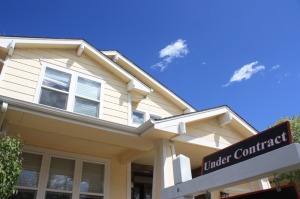Too much housing news is based on the failure to distinguish between affordable housing and housing affordability. Affordable housing is government-subsidized housing for low-income people. Housing affordability is the general level of housing prices relative to the general level of household or family incomes, often measured by dividing median home prices by median family incomes.

Areas where housing is affordable, such as Dallas or Raleigh, may still need some affordable housing for very poor people. But areas where housing is not affordable, such as Portland or San Francisco, will not solve their housing affordability problems by building more affordable housing. Despite this, politicians, reporters, and editors all promote more affordable housing to address housing affordability issues.
The San Jose Mercury News, for example, accuses Republicans of “sabotaging” the Bay Area’s affordable housing plans by cutting federal housing budgets. But the federal government didn’t impose urban-growth boundaries that have restricted development to 17 percent of the Bay Area, so why should federal taxpayers subsidize affordable housing that isn’t going to solve the region’s self-inflicted housing crisis?
In Portland, meanwhile, planners are talking up an affordable housing bond measure for the 2018 ballot. This measure would increase taxes on existing housing to pay for the construction of subsidized new housing. That’s like cutting a strip off the top of a blanket and sewing the strip to the bottom to keep your feet warm.
As the Oregonian points out, Portland voters are suckers for these kinds of bond measures, no matter that most of them fail. (But not, apparently, for light rail, about which even Portland voters are skeptical: TriMet is postponing a planned 2018 rail ballot measure, probably because polling showed it would lose.)
The problem with using affordable housing to address housing affordability is that the government can’t build enough new housing to put a dent into housing prices. According to the 2016 American Community Survey, the Portland urban area has over 800,000 homes and the San Francisco Bay Area (including San Jose) has nearly 2 million. The few thousand housing units built by various affordable housing programs are not going to influence prices, especially when it is the local governments themselves that are sabotaging housing affordability through high impact fees, time-consuming permitting processes, increased taxes on housing, and requirements that homebuilders dedicate of share of what they build to affordable housing, which forces them to sell the rest of what they build for higher prices.
![]() In the hands of urban planners, affordable housing has become just another tool to densify cities. You don’t see many single-family homes built with affordable housing subsidies; instead, they are increasingly directed to so-called transit-oriented developments, four- and five-story complexes built near transit stations.
In the hands of urban planners, affordable housing has become just another tool to densify cities. You don’t see many single-family homes built with affordable housing subsidies; instead, they are increasingly directed to so-called transit-oriented developments, four- and five-story complexes built near transit stations.
Worse, many affordable housing programs create second-class citizens who aren’t allowed to resell their homes at fair market value. To prevent people from buying subsidized affordable homes and then flipping them, cities restrict resales to the original prices plus some factor for inflation. These rules recently caught a Denver woman who wasn’t informed that her 2003-built house was “affordable” when she bought it in 2012. She tried to sell it today only to be informed that she can only sell it to a low-income buyer for far less than its market value.
Politicians, planners, and the media are all being deceptive when they present affordable housing programs as a solution to housing affordability problems. Reporters who aren’t housing experts might be excused for confusing “affordable” with “affordability,” especially since the people they quote fail to make the distinction. But planners and politicians have no such excuse, especially since they are the ones who caused the affordability problems in the first place.
Affordable housing is the wrong tool for the job of improving housing affordability. The right tool is the elimination of those land-use restrictions that made housing unaffordable in the first place, including urban-growth boundaries, punitive impact fees, and other regulations that impede new development.
Randal O’Toole directs the Transportation Policy Center at the Independence Institute, a free market think tank in Denver. This article originally appeared in his blog, Theantiplanner.


